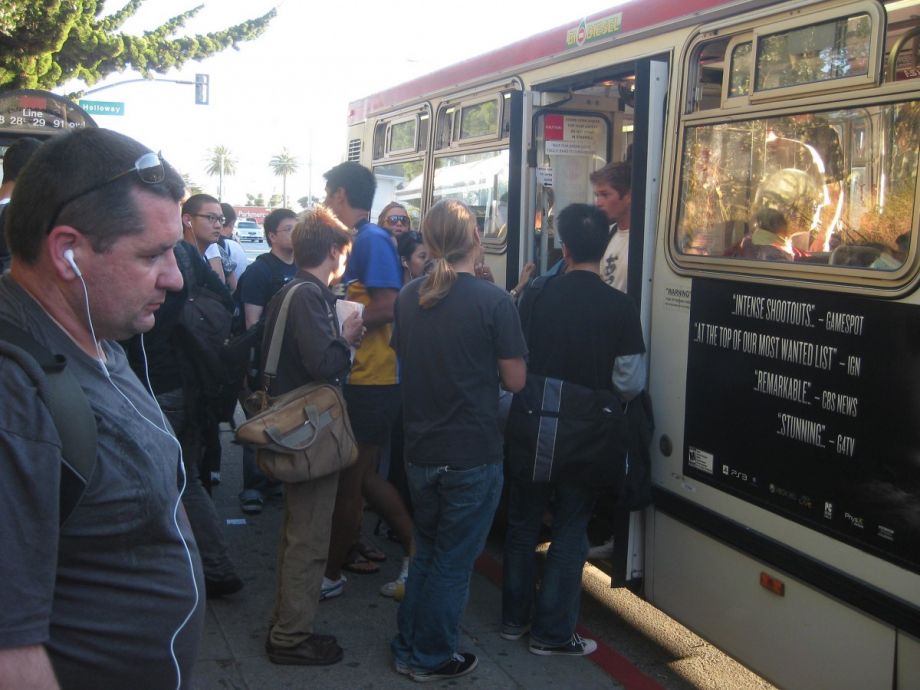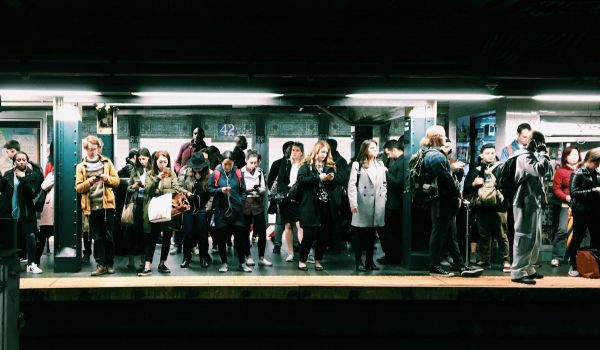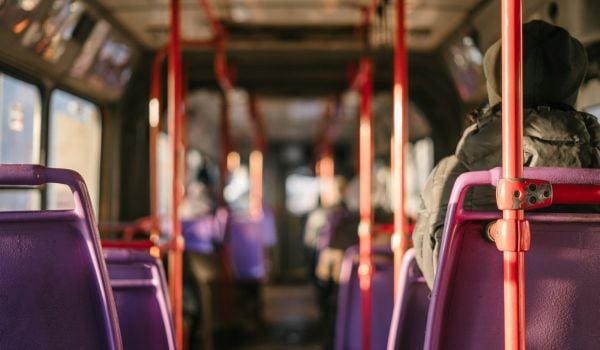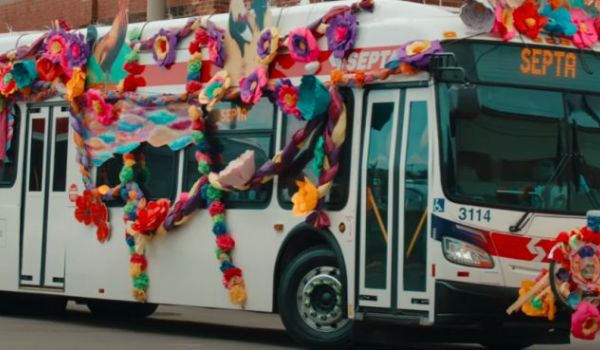I spent a lot of time getting to and from San Francisco’s Chinatown by bus when I was growing up. My parents, who were Chinese immigrants, brought me there for groceries, brunch and, on school holidays, to drop me off to my grandfather, who babysat me on the south side of the city while my parents worked.
Leaving Chinatown, I noticed something peculiar: At Stockton Street, where most riders boarded the bus, they did so by the back door, even though it was illegal. Some in San Francisco to this day believe not boarding at the front door means you do not want to pay for your bus ride, in turn meaning you want to rob the agency of the money it needs to run the system. I thought they were lawbreakers but also appreciated how much faster people were able to board and get on with their day.
In 2012, the San Francisco Municipal Transportation Agency became the first — and to this day, remains the only — agency in the United States and Canada to implement all-door boarding systemwide. And although its buses spend less time waiting at bus stops, and the agency measured a slight decrease in fare evasion, it’s more difficult to determine that now because of the many ways people can pay — or not — for a ride.
The effort was led primarily by an organization known as the San Francisco Transit Riders Union — now known without the word “union” in their name — of which I was on the board of from 2011 to 2013. Mario Tanev, who is now focused on raising his three-year-old son on Muni, spearheaded the campaign because of his experience living in Bulgaria and Switzerland, where transit agencies practiced it.
“Usually, there’s a lot of people at Van Ness and Market [just by Civic Center], for example … trying to queue at the front door, and it just seemed very wasteful,” says Tanev on why he decided to lead the push for all-door boarding. Not only was it wasting riders’ time, he thought, it seemed “sort of disrespectful to the riders, like we’re going to herd you through this one gate, like sheep.”
As a 2017 paper by the National Association of City Transportation Officials notes, dwell time – the time it takes for a bus to stop and let riders on and off — can comprise up to a third of bus travel time and cost billions of dollars annually. In the two years after the SFMTA implemented all-door boarding, buses’ dwell time decreased 38%, from 3.9 seconds to 2.5 seconds per passenger, between 2012 and 2014. For its accordion buses, dwell time decreased from 1.6 seconds to 1.3 seconds per passenger in the same period. Fare evasion decreased 1.6% from 2009 to 2014.
But the agency has not continued to evaluate the effectiveness of all-door boarding since 2014, even though it underwent many changes. From 2015 to 2020, the agency removed some stops from certain routes and retired all of its buses where people needed to navigate stairs to get on and off, replacing these less accessible buses with ones that were nearly flush with sidewalk height. Fewer people riding because of the pandemic — the agency is at 51% of July 2019 ridership as of July 2022 — may mean buses take less time to board people.
Nonetheless, those changes appeared to have made dividends. According to ridership and dwell time data obtained from the SFMTA (which the agency collected through its laser counters mounted on the door’s ceiling), the dwell time per passenger for its routes served by accordion buses, which does not account for the agency’s 5-Fulton route, which uses conventional and accordion buses, decreased to 0.14 seconds per passenger. And although the data the agency has for two-door buses is incomplete — most of its shortest buses, which are retiring, do not have laser counters — their dwell times appear to have decreased as well, to two-fifths of a second per passenger.
Several factors may play a role in the slightly higher dwell time for buses with fewer doors. The routes are more likely to be assigned to lower-ridership routes, where someone who is boarding may be mobility-impaired and need all the time they can get to get on. Some drivers may notice a person running for a very infrequent bus and will open the door and wait for them in response. Living in San Francisco in the days after all-door boarding was implemented, I sometimes saw lone passengers walk to the rear door to board, even though the driver docked the front door of the bus in front of them.
Jacob Denney, who lives in San Francisco’s Mission District and rides the 14-Mission to run errands, prefers to board by the back door. “[It] has a bigger entry and exit space without the narrow corridor,” said Denney. “It makes it easier to see where an open seat is and move to it.” Denney isn’t alone: Other riders, particularly those with children, prefer rear door boarding because it is easier to corral them to seats next to one another.
As for fare evasion, it’s difficult to determine what impact all-door boarding had. San Francisco Muni used to estimate fare evasion by deploying teams to count how many riders paid as they got on. It’s harder to do that nowadays; all youth now ride for free, and because they do not need anything in order to ride, it’s difficult to differentiate between who is a youth versus someone who looks young but is not actually paying. Riders can also buy fares by mobile app, meaning they no longer need to interact with the driver to pay their fare. And since drivers no longer need to ask riders to prove they paid — that job belongs to fare inspectors, who only recently resumed inspecting fares — anyone can simply walk onboard, whether or not they have paid.
The Alameda-Contra Costa Transit District, which in March 2021 began piloting all-door boarding on two of their busiest routes serving Oakland and Berkeley to reduce dwell time and promote social distancing, also lacks the data to help it determine the move’s impact on fare compliance. But unlike San Francisco, they found dwell times slightly increased – in part because a rider survey the agency conducted found they continued to board at the front.
The all-door boarding evaluation found dwell time decreased the most — by half — on its Tempo bus rapid transit route serving Oakland and San Leandro, compared to its front-door boarding predecessor routes. In fact, dwell time on Tempo continued to decrease once the agency required fare payment, after suspending it for several months after the pandemic began.
The reason for the discrepancy may hinge on the width of the buses’ rear doors, and how people perceive its purpose. Buses that run on Tempo, as well as most of San Francisco’s buses, use rear doors that are 47 inches wide, its leaves staying within the bus’ cavity, allowing riders to enter or exit as they please. On the other hand, buses running on the Oakland and Berkeley routes have rear doors as narrow as 30 inches, its leaves flipping out from the bus, a design solution intended to prioritize those exiting through it.
Other agencies outside of the Bay Area are considering all-door boarding, but are apprehensive about losing revenue. The Metropolitan Transportation Authority of New York City, which ultimately plans to allow for all-door boarding systemwide, recently told its drivers to stop automatically opening the back doors when working routes not under their Select Bus Service label, which allows for all-door boarding. This comes as the agency learned they lost an estimated $500 million to fare evasion.
Systemwide all-door boarding will become a reality once the New York City agency finishes installing and activating readers for credit cards and their new OMNY farecard by the rear doors of their buses. Used by 18% of straphangers today, the agency plans to completely transition its famed MetroCard to OMNY by next year.

H. Jiahong Pan 潘嘉宏 (pronouns: they/them/佢/他) is a Minneapolis-based introverted freelance journalist who reports primarily on their lifelong passion: transportation issues. Find them on a bus of all types, the sidewalk, bike lane, hiking trail or perhaps the occasional carshare vehicle, camera and perhaps watercolor set or mushroom brush in tow, in your community or state or regional park regardless of season. If you can’t find them, they’re probably cooking, writing, curating an archive of wall art or brochures, playing board games, sewing or cuddling with their cat.
















